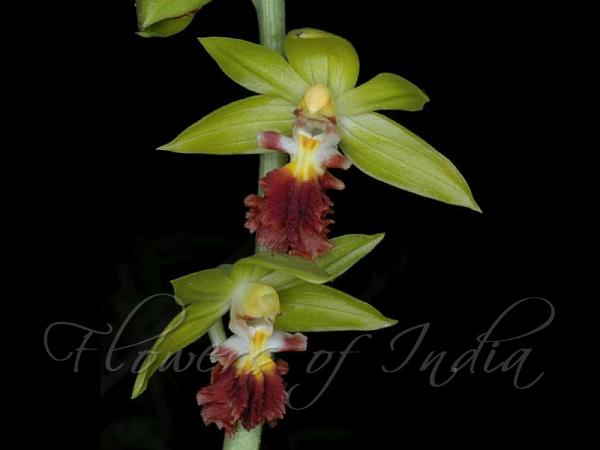Yakla Snow Lotus is a rare perennial herb, found high in the Himalayas, at an altitude of 3500-4300m. It is probably named after the Yakla Pass in Sikkim, India. Its Botanical name is 'Himalaiella yakla' and it belongs to the family Asteraceae ( Sunflower family). Its Synonym is Saussurea yakla.
Yakla Snow Lotus is a beautiful perennial stemless plant. The leaves of the plant form a rosette on the ground. The leaves are broadly elliptic-obovate (inverted egg shaped), green, smooth and shining. The central rib of the leaves is prominently visible. Flowers are deep purple, in a solitary central flower-head. The flower-head is surrounded by a ring of rosette of purplish bracts, again horizontal. The whole plant has a very symmetric and pretty appearance.
The flowers form in a dense head of small capitula often surrounded by dense purple woolly hairs; the individual florets are also purple. The dense purple wool is densest in the high altitude species, and aid in thermo regulation of the flowers, minimizing frost damage at night, and also preventing ultraviolet light damage from the intense high altitude sunlight.
In most Chinese martial arts literature, the snow Lotus was classified a rare herb as precious as lingzhi mushroom, and old ginseng.
Note
Saussurea is a genus of about 300 species of flowering plants from the family Asteraceae, native to cool temperate and arctic regions of Asia, Europe and North America, with the highest diversity in alpine habitats in the Himalaya and Central Asia. Common names include saw-wort and snow lotus, the latter used for a number of high altitude species in central Asia.They are perennial herbaceous plants, ranging in height from dwarf alpine species 5–10 cm tall, to tall thistle-like plants up to 3 m tall. The leaves are produced in a dense basal rosette, and then spirally up the flowering stem.
De Candolle named the genus after Nicolas Theodore de Saussure (1767–1845).
A number of the high alpine Himalayan species are grown as ornamental plants for their decorative dense woolly flower heads; they are among the most challenging plants to grow, being adapted to harsh climates from 3500–5000 m altitude, demanding cool temperatures, a very long (up to 8–10 months) winter rest period, and very good soil drainage in humus-rich gravel soils.
Traditional uses
Costi amari radix or costus root was an important item of Roman trade with India, and is believed to have been the dried root of Saussurea lappa. Saussurea lappa is used a component of the traditional Tibetan medicine Padma 28. Research conducted on the Himalayan medicinal plants by C.P. Kala reveals that the practitioners of Tibetan medicine living in the Pin Valley of Himachal Pradesh use its root for curing dysentery and ulcer . Saussurea involicrata flowers and stems have long been used in traditional Chinese medicine for the treatment of rheumatoid arthritis, cough with cold, stomachache, dysmenirrhea, and altitude sickness, and has been found to have anti inflammatory, cardio tonic, abortifacient, anticancer, and anti fatigue actions. Saussurea obvallata, known as 'brahmakamala' in India is one of the most sacred species, and it has been used for offerings to goddess Nanda Devi for time immemorial..
Pharmacology Saussurea lappa and has been shown to inhibit the mRNA expression of iNOS by lipopolysaccharide stimulated macrophages, thus reducing nitric oxide production. In rats, high doses of 50-200 milligrams per kilogram of crude ethanolic extract reduced observed inflammation in standard laboratory tests, and 25-100 milligrams per kilogram of the sesquiterpene fraction of the extract reduced several molecular markers of inflammation.Ethanol extracts were shown to have analgesic and antiinflammatory effects at high doses of 75-300 milligrams per kilogram. As the slow-growing wild plant is endangered by collections, a substitute grown in tissue culture has been suggested, which is mostly equivalent. Generally the analgesic and anti inflammatory effects of the plant are much inferior to those of 10 milligrams of indomethacin.









